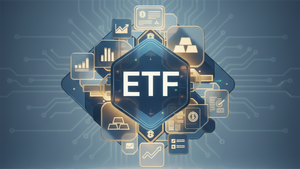
The decentralized finance (DeFi) sector has recently endured a severe stress test, characterized by significant market downturns and cascading liquidations that have sent ripples through the entire cryptocurrency ecosystem. This turbulent period, highlighted by colossal liquidation events exceeding $1.7 billion in leveraged cryptocurrency positions within a mere 24 hours in September 2025, has exposed both the inherent vulnerabilities and the surprising resilience of DeFi protocols.
The immediate implications include a drastic contraction in Total Value Locked (TVL), a key metric for capital deposited in decentralized applications, which plummeted from approximately $300 billion at the beginning of 2022 to around $70 billion by year-end, and has seen further volatility since. This market upheaval has forced a critical re-evaluation of DeFi's underlying mechanisms, risk management strategies, and its future trajectory amidst a more cautious and institutionally aware environment.
The Crushing Wave: What Happened and Why It Matters
The recent crypto market downturn was precipitated by a confluence of factors, including persistent macroeconomic concerns such as lingering recession fears, weak global economic data, rising Treasury yields, and a hawkish stance from the Federal Reserve regarding future rate cuts. These external pressures created a pervasive "risk-off" sentiment among investors, leading to a flight from riskier assets like cryptocurrencies and DeFi protocols. Geopolitical events, such as new tariff policies, have also been cited as catalysts for massive liquidation chain reactions.
The downturn's most dramatic manifestation was the series of liquidation cascades. DeFi's inherent structure, often involving highly leveraged positions (some as high as 20x to 50x) and self-referential crypto-to-crypto collateral, amplified these price swings. When the value of collateralized assets, like Ethereum (ETH-USD) and Bitcoin (BTC-USD), fell below predefined thresholds, automated smart contracts triggered forced sales, or liquidations. For example, Ethereum alone experienced nearly $500 million in rapid liquidations, predominantly from long positions, underscoring the market's thin liquidity, especially during off-peak hours, which can exacerbate these effects. This "snowball effect" pushed prices even lower, triggering further liquidations and creating a vicious cycle of downward pressure. Initial market reactions were marked by extreme volatility, widespread panic selling, and a significant erosion of investor confidence, echoing past crises like the Terra/LUNA collapse of May 2022.
The Resilient and The Ruined: Winners and Losers in the DeFi Shake-Up
The recent market turmoil served as a harsh differentiator, separating robust, transparent DeFi models from over-leveraged and often opaque centralized entities.
Among the most significant "losers" were centralized crypto lenders and exchanges that had taken on excessive risk. Terra (LUNA) and its algorithmic stablecoin TerraUSD (UST) (LUNA-USD) experienced a catastrophic collapse in May 2022, wiping out an estimated $60 billion due to a fundamental flaw in its uncollateralized algorithmic design. This contagion spread to protocols like Anchor Protocol (ANC-USD), which offered unsustainably high yields on UST deposits and crumbled alongside it. Prominent crypto hedge fund Three Arrows Capital (3AC) (no ticker), with significant investments in LUNA and highly leveraged positions, defaulted on loans, triggering insolvencies across several centralized platforms.
Centralized lending platforms such as Celsius Network (no ticker) and Voyager Digital (OTCMKTS: VYGVQ) halted customer withdrawals and subsequently filed for bankruptcy, revealing opaque risk management and over-exposure to volatile assets and interconnected entities like 3AC. BlockFi (no ticker) and Genesis (no ticker) also faced severe liquidity issues and subsequent bankruptcies due to their exposure to 3AC and the spectacular implosion of centralized exchange FTX Group (no ticker) in November 2022, which revealed alleged mishandling of customer funds and fraudulent activities. Cross-chain bridges, vital DeFi infrastructure components, continued to be targets for hackers, resulting in billions of dollars stolen and further eroding trust.
In stark contrast, many core DeFi protocols demonstrated surprising resilience. Decentralized Exchanges (DEXs) like Uniswap (UNI-USD) saw their daily trade volume quadruple following the FTX collapse, as users fled centralized platforms seeking self-custody and transparent trading. Uniswap briefly surpassed Coinbase (NASDAQ: COIN) in daily trading volume for ETH pairs. DeFi lending protocols such as Aave (AAVE-USD), Compound (COMP-USD), and MakerDAO (MKR-USD) largely functioned as intended, with their automated, smart contract-governed liquidation mechanisms protecting lenders by automatically closing undercollateralized positions. This transparent, code-based execution, without human intervention, proved robust during extreme volatility, sharply contrasting with the discretionary and often detrimental actions of centralized lenders. The crisis reinforced the argument for truly decentralized, transparent financial systems, leading to a renewed focus on fundamental principles and a "cleansing" of unsustainable projects.
Industry Reckoning: Broader Implications and Historical Echoes
The recent DeFi liquidation cascades underscore a critical juncture for the broader crypto industry, signaling market maturation alongside persistent volatility and increasing institutional integration. The sensitivity to macroeconomic factors like inflation, interest rates, and cautious central bank signals is now undeniable, linking crypto's fate more closely with traditional finance.
The ripple effects extend widely. Centralized exchanges and lending platforms remain susceptible to insolvencies, drawing comparisons to past failures like FTX and Celsius, and potentially triggering further runs on less capitalized platforms. While DeFi protocols with robust fundamentals are better positioned to weather the storm, the interconnectedness within DeFi means distress in one protocol can cascade across others due to composability. Mining operations face reduced profitability, potentially leading to industry consolidation. Crypto-focused venture capital (VC) firms are likely to become more risk-averse, prioritizing existing portfolios and seeking projects with demonstrable utility over hype. Even traditional finance (TradFi) institutions with crypto exposure, even if indirect, face potential losses, raising financial stability concerns if direct interlinkages grow significantly.
Regulatory and policy implications are perhaps the most profound. Global scrutiny is intensifying, accelerating policy shifts towards clearer frameworks for digital assets, particularly stablecoins. Regulators aim to balance innovation with consumer protection and financial stability, seeking to integrate digital assets into existing financial architecture while demanding transparency and accountability. Key policy priorities include clarifying "control" in law, defining "money transmitting" businesses in a decentralized context, and interfacing with DeFi's governance structures to address leverage and liquidity mismatches. Legislative progress, like the Financial Innovation and Technology for the 21st Century (FIT21) Act in the U.S. and the implementation of MiCA in the EU, will shape the future landscape.
Historically, the crypto market has weathered numerous downturns, from the "crypto winter" of 2018 to the "312" crash in March 2020 and the catastrophic events of 2022 (Terra/LUNA, FTX). These events, while painful, have often served as "brutal resets," weeding out speculative excesses and paving the way for stronger foundations and subsequent growth. The current meltdown shares characteristics with these past cycles, particularly in rapid price declines and loss of confidence, but also highlights the increasing complexity and interconnectedness of the evolving digital asset landscape. Comparisons to traditional finance crises, such as the 1987 Black Monday crash or the 2008 financial crisis, illustrate how leverage and interconnectedness can amplify systemic risks, regardless of the asset class.
The Road Ahead: What Comes Next for DeFi
The recent market turbulence has initiated a necessary recalibration within the DeFi sector, paving the way for both short-term adaptations and long-term strategic pivots. In the immediate future, there's a clear shift in investor sentiment towards stability and risk-awareness, favoring projects with robust security, transparent operations, and conservative lending practices. A renewed focus on true decentralization, as a self-defense mechanism against centralized failures, is anticipated, directing capital towards genuinely permissionless projects. Protocols are expected to strategically reposition by emphasizing core utility, disciplined cost management, and robust community engagement, while exploring collateral diversification and greater use of stablecoins to mitigate volatility exposure.
Long-term, the DeFi sector is poised for maturation and deeper integration with traditional finance. This includes increased institutionalization through financial products like ETFs and the tokenization of real-world assets (RWAs), leading to greater stability and liquidity. Regulatory harmonization and compliance will become paramount globally, with projects embracing regulation early gaining a competitive advantage. Continuous technological advancements, particularly in Layer 2 solutions for scalability and interoperability, will enhance user experience and foster new financial product innovation, including AI integration into decentralized systems. Ethereum co-founder Vitalik Buterin's suggestion of "low-risk DeFi," focusing on stablecoin lending with reliable returns, highlights a potential pathway for sustainable growth and a steady income stream without compromising decentralized values.
The market opportunities emerging from this period include acquiring undervalued assets with strong fundamentals, the continued growth of decentralized exchanges (DEXs) and perpetual DEXs as users seek transparency, and the burgeoning field of Real-World Asset (RWA) tokenization. However, significant challenges persist, including ongoing regulatory uncertainty, the inherent volatility of cryptocurrencies, persistent security risks from hacks, and the need to improve scalability and user experience. Macroeconomic headwinds, such as inflation and central bank monetary policies, will continue to exert influence. Potential scenarios range from continued maturation and deep integration with TradFi, a "super cycle" driven by favorable macroeconomic factors, or a prolonged bear market if inflationary pressures persist. Ultimately, the downturn is seen by many as a "cleansing event," strengthening the resolve of long-term builders and fostering a more robust and resilient DeFi ecosystem.
Conclusion: A More Mature, Resilient DeFi Emerges
The recent DeFi market downturn and subsequent liquidation cascades represent a pivotal moment, serving as a critical stress test that has reshaped the landscape. The key takeaways underscore the perils of over-leveraged trading, the systemic risks embedded in interconnected protocols, the fragility of unsustainable token economics, and the persistent threat of security breaches. The failures of centralized entities like FTX and Celsius further highlighted the stark contrast with genuinely decentralized protocols that, despite the volatility, continued to operate as designed, executing automated liquidations and preserving core functionality. This period has been a harsh but necessary lesson in risk management and the fundamental principles of decentralized finance.
Moving forward, the DeFi market is exhibiting signs of renewed momentum and a concerted push towards resilience and maturity. Total Value Locked (TVL) figures, while volatile, indicate a growing demand for liquidity and trust, particularly in stablecoins and lending protocols that prioritize stability over speculative yields. The increasing institutional interest, driven by regulatory clarity and the approval of spot Bitcoin ETFs (BITA-USD), is shifting activity from purely speculative trading towards more institutional treasury operations. Ethereum's (ETH-USD) ongoing development of Layer 2 solutions aims to enhance scalability and reduce costs, while the tokenization of real-world assets (RWAs) is emerging as a rapidly expanding segment, poised to bridge traditional and decentralized finance.
The lasting impact of this period is an intensified call for stricter compliance and regulatory oversight globally, pushing the market beyond unsustainable hype towards projects focused on sustainable value creation, robust risk management, and scalable infrastructure. This evolution implies that future market movements will be more intertwined with macroeconomic factors than in previous cycles. For investors in the coming months, heightened vigilance and a disciplined approach are crucial. Monitor regulatory developments closely, track institutional investment flows, and prioritize projects with strong fundamentals, clear utility, and significant technological advancements like AI integration and Layer 2 scalability. Emphasize robust risk management through diversification and avoiding excessive leverage, and meticulously scrutinize security audits and the stability of stablecoins. Paying close attention to global economic indicators, such as the U.S. Federal Reserve's monetary policy, will also be paramount as the interconnected crypto market continues to evolve towards a more mature and resilient future.



